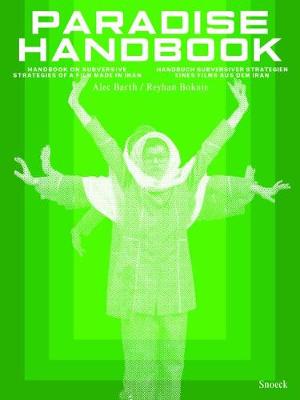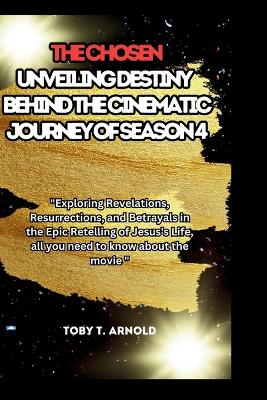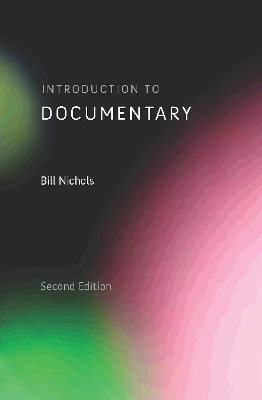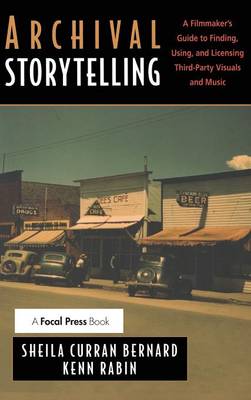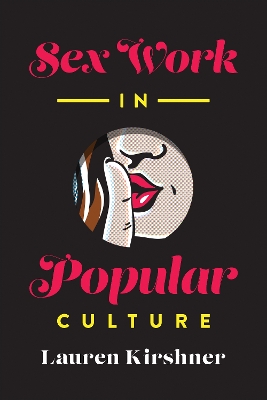The Chosen Unveiling Destiny - Behind the Cinematic Journey of Season 4
by Toby T Arnold
Post-1990 Documentary
Presents in depth case studies focusing on major aspects of post 1990 documentary practices and styles This book questions the meanings of 'independence' for documentaries made in the post 1990 context, a period of unrivalled disruption and creativity in the field. Based upon a reasoned selection of contributions, it is the first collection of in depth case studies cutting across formats, media, subject matters, purposes and national divides. Writing from a wide range of academic perspectives, t...
While sizable literature exists on the themes, issues and voices that constitute resistance in historical Indian documentary cinema, less is known about contemporary modes of resistance in Indian documentary. This volume identifies languages and practices of resistance constructed by Indian documentary practitioners located in contemporary global and national contexts organised by majoritarian political discourse, rising social inequalities, tightening media regulatory mechanisms and variable ac...
“It is said that fact is sometimes stranger than fiction, and nowhere is that more true than in the case of black holes. Black holes are stranger than anything dreamed up by science fiction writers.”In 2016 Professor Stephen Hawking delivered the BBC Reith Lectures on a subject that fascinated him for decades – black holes.In these flagship lectures the legendary physicist argued that if we could only understand black holes and how they challenge the very nature of space and time, we could unlo...
In the years after the First World War the British government had to adapt its communication policy to connect with the new mass electorate. This book examines the government’s own Film Units and their slow development of the Public Information Film. By reviewing the entire film catalogue produced by the Empire Marketing Board, the General Post Office and Crown Film Units, particular themes are identified which not only reflect the demands of the Units’ sponsors but also the anxieties and concer...
Britain emerged from war a changed country, facing new social, industrial and cultural challenges. Its documentary film tradition – established in the 1930s and 1940s around legendary figures such as Grierson, Rotha and Jennings – continued evolving, utilising technical advances, displaying robust aesthetic concerns, and benefiting from the entry into the industry of wealthy commercial sponsors. Thousands of films were seen by millions worldwide. Received wisdom has been that British documentary...
Reel Resistance - The Cinema of Jean-Marie Teno
by Melissa Thackway and Jean-Marie Teno
Weaving together critical analysis and a filmic conversation, this book journeys through the multiple layers of Cameroonian filmmaker Jean-Marie Teno's thematically and aesthetically challenging body of work, framed here as a formof decolonial cinematic resistance. Co-winner African Literature Association Book of the Year - Scholarship Both a monograph and a critical dialogue between academic Melissa Thackway, author of Africa Shoots Back, and the Cameroonian filmmaker Jean-Marie Teno, this co...
Arctic Cinemas and the Documentary Ethos
Beginning with Robert Flaherty's Nanook of the North (1922), the majority of films that have been made in, about, and by filmmakers from the Arctic region have been documentary cinema. Focused on a hostile environment that few people visit, these documentaries have heavily shaped ideas about the contemporary global Far North. In Arctic Cinemas and the Documentary Ethos, contributors from a variety of scholarly and artistic backgrounds come together to provide a comprehensive study of Arctic do...
What mental and physical distress do actors, camerapersons, and reporters experience when working on reenactments of traumatic moments in history? In Political Camerawork, D. Andy Rice theorizes that the intense feelings produced while creating these performed scenarios, called "simulation documentaries," connect difficult pasts to the present. Building on his background as a nonfiction film director, producer, editor, and cinematographer, Rice analyzes performance techniques to gain insight i...
This new edition of Bill Nichols’s bestselling text provides an up-to-date introduction to the most important issues in documentary history and criticism. Designed for students in any field that makes use of visual evidence and persuasive strategies, Introduction to Documentary identifies the distinguishing qualities of documentary and teaches the viewer how to read documentary film. Each chapter takes up a discrete question, from "How did documentary filmmaking get started?" to "Why are ethical...
Robert Drew and the Development of Cinema Verite in America
by P.J. O'Connell
Author P. J. O’Connell traces Robert Drew’s influence on cinema verite through extensive interviews with Drew and with some of the founding fathers of American cinema verite filmmaking—Donn Alan Pennebaker, Gregory Shuker, and Richard Leacock. Robert Drew’s contributions to documentary film have been both technical and conceptual. Realizing that his equipment was too heavy and intrusive, Drew persuaded Time-Life Broadcasting to sponsor the development of new, lightweight, portable synchronous so...
“I have a great idea for a documentary. Now what do I do?” The Documentarian—The Way to a Successful and Creative Professional Life in the Documentary Business is the ultimate go-to source for making documentaries, containing the crucial tips and strategies that every filmmaker needs to know. It is detailed in explaining how to conceive, shoot, and sell a documentary, along with specific advice overall in how to succeed in the independent film business. Included is wisdom from experts like film...
Archival Storytelling: A Filmmaker's Guide to Finding, Using, and Licensing Third-Party Visuals and Music
by Sheila Curran Bernard and Kenn Rabin
Archival Storytelling is an essential, pragmatic guide to one of the most challenging issues facing filmmakers today: the use of images and music that belong to someone else. Where do producers go for affordable stills and footage? How do filmmakers evaluate the historical value of archival materials? What do verite' producers need to know when documenting a world filled with rights-protected images and sounds? How do filmmakers protect their own creative efforts from infringement? Filled with a...
Inventive new methods of audio-visual mediation and aesthetic activism have been giving shape, since at least the mid-2000s, to feelings of despair, disappointment, and rage at the injustice that South Africa’s colonial and apartheid histories continue to trail in their wake. Wayward Feeling reveals how racism, sexism, and other forms of structural disenfranchisement have continued to assert themselves in affective terms, and how these terms have been recast in spaces both public and intimate in...
Sex Work in Popular Culture delves into provocative movies, TV shows, and documentaries about sex work produced in the last fifteen years – a period of debate and change around the meaning of sex work in North American society. From Oscar-winning films to viral YouTube videos, and from indie documentaries to hit series – many of which are made by women – the book reveals how sex work is being recognized as real work and an issue of human rights. Lauren Kirshner shares how popular culture has res...
Frames and Framing in Documentary Comics (Palgrave Studies in Comics and Graphic Novels)
by Johannes Schmid
Frames and Framing in Documentary Comics explores how graphic narratives reframe global crises while also interrogating practices of fact-finding. An analog print phenomenon in an era shaped by digitalization, documentary comics formulates a distinct counterapproach to conventional journalism. In what ways are 'facts' being presented and framed? What is documentary honesty in a world of fake news and post-truth politics? How can the stories of marginalized peoples and neglected crises be told?...
Art in the Cinema
In the 1940s and 1950s, hundreds of art documentaries were produced, many of them being highly personal, poetic, reflexive and experimental films that offer a thrilling cinematic experience. With the exception of Alain Resnais’s Van Gogh (1948), Henri-Georges Clouzot’s Le Mystère Picasso (1956) and a few others, most of them have received only scant scholarly attention. This book aims to rectify this situation by discussing the most lyrical, experimental and influential post-war art documentarie...
By the director of the hit documentary Behind the Burly Q comes the first ever oral history of American Burlesque--as told by the performers who lived it, often speaking out here for the first time. By telling the intimate and surprising stories from its golden age through the women (and men!) who lived it, Behind the Burly Q reveals the true story of burlesque, even as it experiences a new renaissance. Burlesque was one of America's most popular forms of live entertainment in the first half of...
In Whose Eyes? (Culture, Politics, and the Cold War)
by Tran Van Thuy and Le Thanh Dung
Tran Van Thuy is a celebrated Vietnamese filmmaker of more than twenty award-winning documentaries. A cameraman for the People's Army of Vietnam during the Vietnam War, he went on to achieve international fame as the director of films that address the human costs of the war and its aftermath.Thuy's memoir, when published in Vietnam in 2013, immediately sold out. In this translation, English-language readers are now able to learn in rich detail about the life and work of this preeminent artist. W...
Designed for researchers seeking new ways to explore their field and media professionals aiming to extend their practice, this filmmaking handbook shows you how to plug in to issues at the intersection of documentary cinema and ethnography. Exploring the unique potential for filmmaking to describe human activity and the role of video editing in generating new ideas about human experience, it offers practical and theoretical advice for those making their first films. Based on over twenty years...
